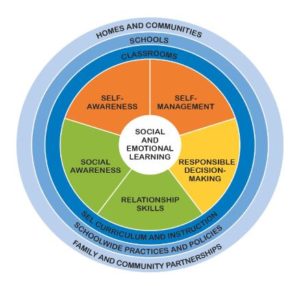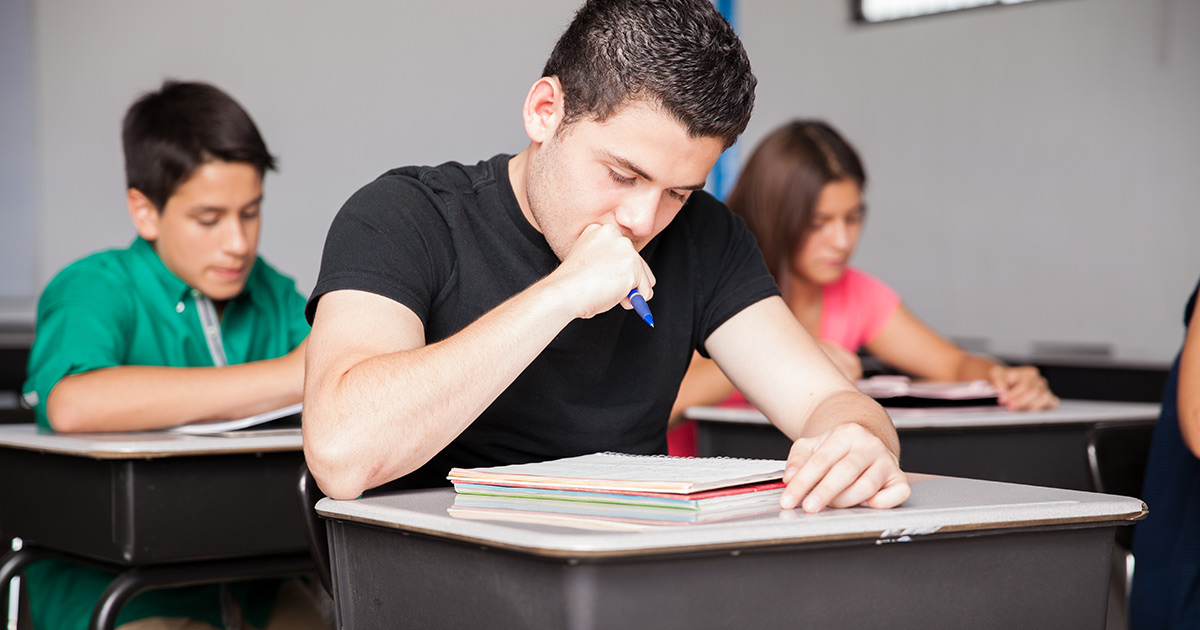
We live in a stressful world, and our nation’s children and young adults are coping with new and prevalent emotional realities we can’t ignore. Research indicates that when educators work to teach learners how to alleviate and manage stress, students become more likely to learn deeply, avoid negative behaviors and achieve successful outcomes with long-term effects. Social-emotional learning (SEL) practices are the focus of copious research studies — and it’s a good thing they are because SEL is needed more than ever.
So just what is social-emotional learning? And more importantly, why do we need it? Read on.
What is the definition of SEL?
According to the Collaborative for Academic, Social, and Emotional Learning (CASEL), an organization that works toward integrated social-emotional learning for preschool through high school, “social and emotional learning (SEL) is the process through which children and adults acquire and effectively apply the knowledge, attitudes, and skills necessary to understand and manage emotions, set and achieve positive goals, feel and show empathy for others, establish and maintain positive relationships, and make responsible decisions.” SEL can be seamlessly integrated into a school’s culture and norms or explicitly taught outside of academic learning time.
Social-emotional learning is generally broken down into five categories

Retrieved from https://casel.org/
Self-awareness
Self-awareness is being able to recognize and comprehend one’s emotions and how they translate into our behaviors. This includes recognizing stress or negative emotions, being aware of one’s abilities and weaknesses as well as a “well-grounded sense of self-efficacy and optimism,” according to CASEL.
Self-management
Self-management takes self-awareness one step further into the ability to regulate one’s feelings and behaviors. This can include controlling anger, handling stress, self-motivation, or persistence through setbacks.
Social awareness
Social awareness looks outward and is about empathizing with others and possessing a willingness to understand and respect the unique experiences, norms, and behaviors of others.
Relationship skills
This section is about creating and maintaining healthy relationships through cooperation, active listening, conflict resolution, and communication.
Responsible decision-making
This final section is about making safe, healthy choices that abide by one’s positive and healthy personal moral code and benefit their well-being — and the well-being of others.
Why SEL belongs in schools
Students spend most of their time in school, so to ignore their social-emotional learning needs for the 30+ hours a week they spend in classrooms would be a waste of precious developmental learning time. School is also the place where students encounter the bulk of their social interactions, challenges, and opportunities for personal growth. Certainly, schools and teachers have been providing way more than academic learning for decades. However, research shows that by providing consistent, purposeful, and robust SEL programs, students can benefit in multiple ways.
According to The Pennsylvania State University and Robert Wood Johnson Foundation research brief Social Emotional Learning in Elementary School, “extensive research shows that SEL programs can promote academic achievement and positive social behavior, and reduce conduct problems, substance abuse, and emotional distress. Benefits of SEL in the elementary years have been documented in reviews by independent research teams and through meta-analyses which demonstrate the immediate and long-term positive outcomes of well-designed, well-implemented SEL programming.”
An NPR report on SEL notes that “kids who act up a lot in school and at home — even very young kids — are more likely to have mental health problems and commit crimes years later as adults.” Thus, researchers have set out to create SEL programs that serve as emotional intelligence interventions, discovering that much like we teach academic subjects, emotional intelligence can also be taught.
Why we need social-emotional learning more than ever
Students who receive social-emotional interventions early and throughout their learning careers demonstrate impressive and measurable benefits later on in life. The research is hard to ignore: The development of social-emotional skills in kindergarten leads to the higher likelihood of obtaining a college degree, adult employment, and lessens one’s chance of substance abuse or getting into trouble with the law as an adult (Jones, Greenberg, & Crowley, 2015). A Teachers College Study showed that, on average, for every dollar invested in SEL, there is a return of eleven dollars — a return on investment most investors would envy. Further, SEL practices could be highly effective when it comes to closing the achievement gap, disrupting the school-to-prison pipeline by furnishing underserved populations with the critical foundational skills necessary to succeed in higher education and the workplace. SEL also includes Restorative Justice programs that have been known to reduce suspensions and keep kids in school.
The lasting impact of SEL
Long-term, SEL improves our students’ attitudes toward learning and their self-efficacy. The mounting research is staggering and it all points to social-emotional learning as a key to bolstered graduation rates, increased enrollment in institutions of higher learning, greater capacity for workplace success, improved mental health, reduced crime, and overall healthier relationships and self-efficacy amongst citizens. In a 2017 follow-up study to a 2011 SEL study, it was found that the effects of SEL continue to benefit students even years after their learning. “In follow-up assessments, an average of 3.5 years after the last intervention, the academic performance of students exposed to SEL programs was an average 13 percentile points higher than their non-SEL peers, based on the eight studies that measured academics,” the study notes. “SEL continued to boost student well-being in the form of greater social and emotional competencies, prosocial behavior, and prosocial attitudes. Furthermore, SEL students showed lasting decreases in negative outcomes such as conduct problems, emotional distress, and drug use, compared to control groups.”
As the collective understanding of trauma-informed practice deepens, this necessitates a move toward classrooms that cover emotional intelligence, self-awareness, emotional regulation, interpersonal relationships, and positive decision-making. SEL is a powerful mechanism for instilling long-term social and emotional resilience and addressing student trauma.
